Last week Ocado’s chief executive Tim Steiner unveiled a host of upgrades for the retailer’s Smart Platform. Nearly a decade after the grocer first styled itself as a tech platform, now is the time for Ocado to walk the walk, says Hugh Radojev.
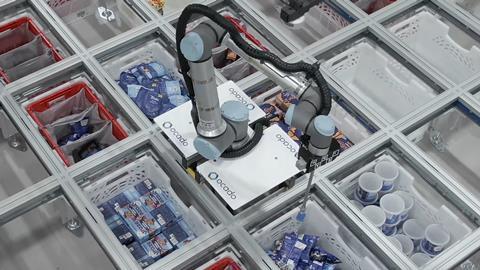
There was palpable excitement on the face of co-founder and chief executive Tim Steiner when he took to the stage last Wednesday to unveil Ocado Re:Imagined – a suite of new hardware and software technologies that collectively represent the biggest leap forward for the business since it started selling its Ocado Smart Platform (OSP) to third parties in 2014.
In front of a socially-distanced audience and live-streamed to the world, Steiner giddily promised that what he was about to showcase was “game-changing” for OSP customers.
“We have broken through the trade-offs between big ranges, low prices and the ability to deliver whenever customers want,” he declared.
Over the course of an hour, Steiner ran through the seven innovations, ranging from lighter bots to automated picking and packing arms, which he said would provide “cascading” benefits to Ocado’s partners at home and abroad.
Some of those benefits, at least, are obvious. New, lighter 600 Series picking robots that require smaller and lighter overheard grids to run on mean Ocado can now fit out existing spaces rather than custom-building sheds to turn into automated customer fulfilment centres (CFCs).
“Quartering the timeline needed to outfit new sheds will not only allow it to hit its target with Kroger faster and cheaper, but it could twist the US giant’s arm into ordering more”
While previous CFCs could take on average two years to complete and cost in excess of £35m to construct, Steiner says that in future new sheds could “go from zero to fully operational in six months”.
The implications of this alone are potentially huge for Ocado. The first of its 20 planned CFCs for Kroger opened last year, nearly three years after the deal was struck. Quartering the timeline needed to outfit new sheds will not only allow it to hit its target with Kroger faster and cheaper, but – as Steiner is surely hoping – it could twist the US giant’s arm into ordering more.
Smaller grids also mean smaller sheds. Steiner says that Ocado has looked at automating warehouses as small as 10,000 sq ft and would not rule out the possibility of even smaller ‘micro fulfilment centres’ in future.
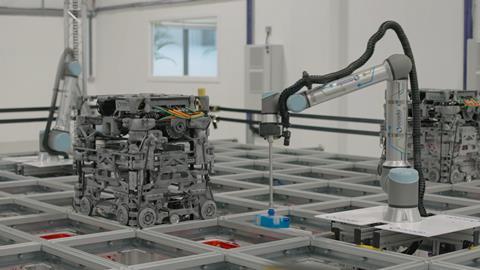
Along with the “material” reduction in the time and cost of construction and fit-out, Ocado also unveiled new technologies aimed at reducing warehouse picking-and-packing staff costs.
By automating everything from the picking and packing of orders to the order in which they are loaded into delivery trucks, Steiner said partners could cut staffing costs by between 30% and 40% in their supply chains.
The final benefits of the new technologies are somewhat less easy to understand - without a degree in robotic engineering at least - but they are potentially no less exciting for that.
Ocado also unveiled some new software upgrades for partners, such as Ocado Swift Router, which Steiner says will enable partners to offer customers their full ranges in shorter lead times without reducing lines or increasing prices for picking and last-mile delivery costs.
Ocado Orbit creates a “virtual distribution centre” in which CFCs of different-sized inventories can be linked, ensuring customers full access to full ranges.
“These capabilities will transform the customer proposition in online grocery by shattering the trade-offs that define today’s normal,” Steiner said.
“For the first time, consumers will not have to make a compromise between choice, lead times and value. OSP partners will be able to deliver an even better customer proposition in their markets and at the best economics in online grocery.”
“It’s a hell of a pitch and one that clearly excited investors – Ocado’s share price closed up more than 5% on the day of the briefing”
Ocado is now pitching itself as online grocery’s silver bullet, as well equipped to arm current and prospective partners with the technology to go toe-to-toe with competitor supermarket chains as it is able to cut the growth of rapid delivery start-ups off at the knees.
It’s a hell of a pitch and one that clearly excited investors – Ocado’s share price closed up more than 5% on the day of the briefing.
Time to realise potential
It comes at an opportune time for the business. Since becoming as much of a tech provider as a grocer in 2014, Ocado enjoyed a purple patch of international partnerships in the two years to 2019.
However, in the years since, it has managed just one further international tie-up and, while it continued to be the fastest-growing grocer throughout the pandemic, its lack of delivery capacity saw it fall behind the big supermarkets in terms of online market share.
Consistently delivering profits continues to be an issue and, as the international deals have dried up, Ocado’s start-up mindset and innovation-for-tomorrow story have begun to wear thin on investors – its shares have almost halved in the past year.
Ocado and Steiner have always promised that investors will see results in the future – and Re:Imagined is no different. The new tech will be able to be installed in new warehouses from 2024 and retrofitted in existing sheds.
The potential of these new technologies is limitless, but a lack of potential has never been Ocado’s problem.
After nearly a decade of selling partners and the City its tech platform vision, Ocado has more means than ever, but it needs to start delivering more finished CFCs, more international partnerships and, ultimately, more value for its shareholders.
- Get the latest grocery news and analysis straight to your inbox – sign up for our weekly newsletter



























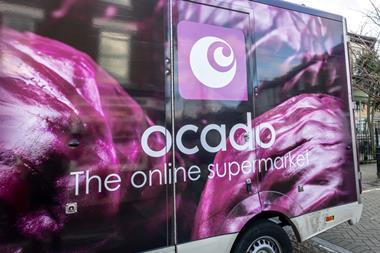

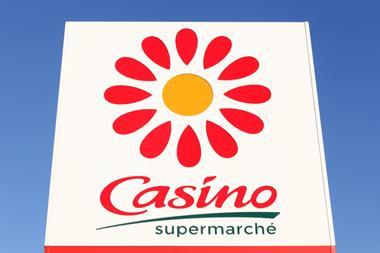
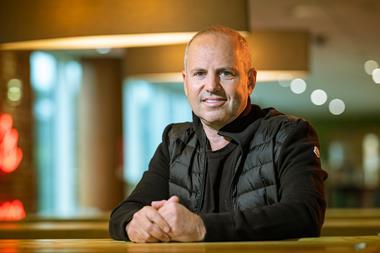
No comments yet